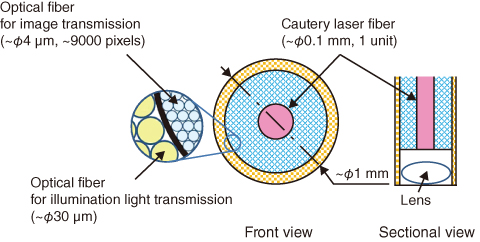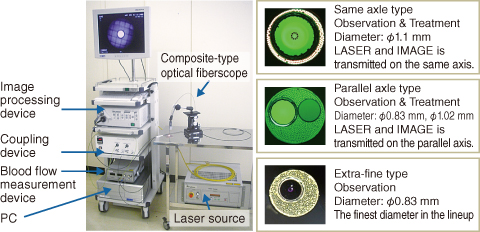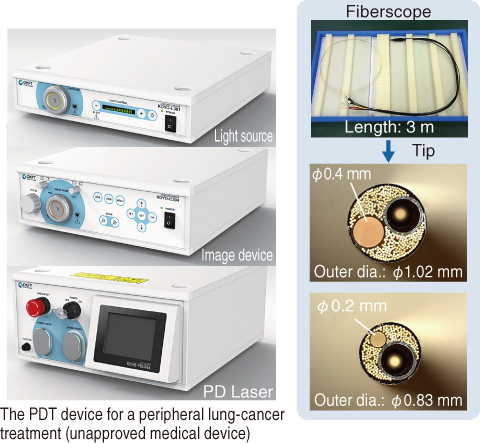
Fig.5-8 Schematic of the composite-type optical fiberscope system

Fig.5-9 Minimally invasive laser treatment system and the tips of various fiberscopes

Fig.5-10 Example of industrial development of the device
Minimally invasive treatments have been promoted by recent advances in medical engineering. Such treatments may reduce the burden of care and abridge hospitalization time, enhancing patients’ quality of life. The composite-type optical fiber can transmit an image and a laser beam in parallel. With this technology, a specific tool has been developed that allows remote manipulation of the thermo-nuclear experimental reactor and the large-sized nuclear installation at JAEA. Because the developed technique is applicable to various regions in the body, it may greatly benefit the burgeoning minimally invasive surgery market. We are applying this technique to the development of various medical instruments.
Fig.5-8 shows the configuration of the composite-type optical fiberscope (same axle type). The center core and surrounding optical fibers transmit the laser beam and the image, respectively. The left panel of Fig.5-9 is a photograph of the minimally invasive laser treatment system. The right panels show the tip of the fiberscope adapted to various tests and treatments. Currently, we are trialing this system on lung cancer therapy.
Although central lung cancer can be treated by photodynamic therapy (PDT) at the transbronchial site, PDT is unsuitable for early peripheral lung cancer because existing endoscopes cannot reach the peripheral lung field. On the other hand, a composite-type optical fiberscope with an outside diameter of 1 mm can be inserted into the peripheral lung field, allowing detailed observation and precise irradiation of peripheral lung cancer. The developed fiberscope is also expected to provide a new PDT laser surgery device. Toward these goals, we have patented the composite-type optical fiberscope, and accumulated knowledge of the instrumental assembly. Furthermore, we have networked with related organizations and several medical scientific societies. The composite-type optical fiber technique has been evaluated as compatible with medical needs and eminently suited to a new business enterprise.
Therefore, it was adopted in the FY 2012 “Program for Creating STart-ups from Advanced Research and Technology” (START Program), which competes for government grants from Ministry of Education, Culture, Sports, Science and Technology (MEXT).
These efforts resulted in the successful launch of the new venture business “OK Fiber Technology Co., Ltd.” of JAEA in September, 2013. The business aims to distribute the device based on the composite-type optical fiber technique across the globe. In this venture, the PDT device for peripheral lung cancer treatment is being continuously developed (Fig.5-10).
The present study was partly supported by the Program for Creating STart-ups from Advanced Research and Technology (START Program) “The industry and medical tool development project based on the composite-type optical fiber” of the Ministry of Education, Culture, Sports, Science and Technology of Japan (MEXT).